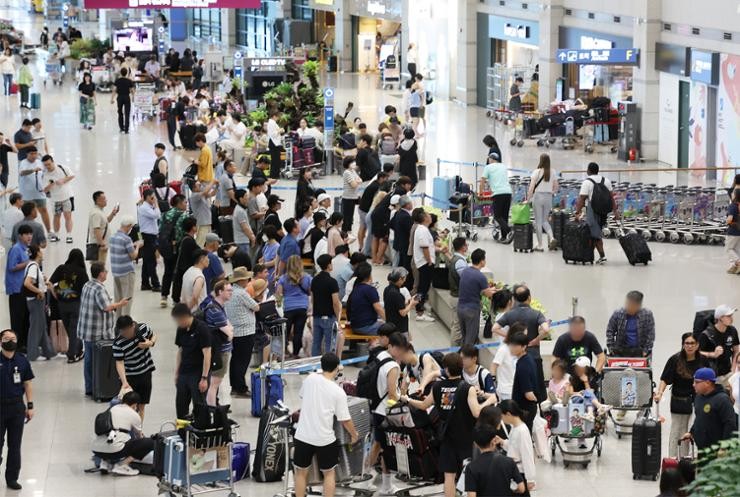
The foreign population in Korea is projected to approach nearly 7% by the year 2042
Latest
 |
| The arrival area of the Incheon International Airport in this photo taken on Aug. 17, 2023. (Source: Yonhap) |
Foreigners residing here for three months or longer came to 1.65 million in 2022, accounting for 3.2 percent of the country's total population of 50.02 million.
The number is expected to be on a constant rise to reach 2.85 million in 2042 and take up 5.7 percent of the country's total population, according to the report by Statistics Korea.
Their proportion could reach as high as 6.9 percent by that time, it added.
Korea's total population is projected to be on a constant decline to reach 46.77 million in 2042 from the peak of 51.75 million in 2024.
Such demographic changes are forecast to be noticeable among the working age population.
The total population aged 15-64 is projected to shrink to 25.73 million in 2042 from 35.27 million in 2022.
But the number of foreigners in the age group could rise to 2.36 million in 2042 from 1.47 million in 2022, meaning that their proportion is expected to more than double to 8.4 percent.
The number of the so-called migration background population - naturalized foreigners and their children, as well as foreign residents - is forecast to hit 4.04 million in 2042, or 8.1 percent of the total population.
The comparable figure for 2022 came to 2.2 million, which accounted for 4.3 percent of the total, the data showed.
Korea is facing drastic changes in its demographic picture due to the chronically low birth rate and population aging.
The country's total fertility rate, which is the average number of expected births from a woman in her lifetime, fell to a record quarterly low of 0.65 in the fourth quarter of 2023.

















